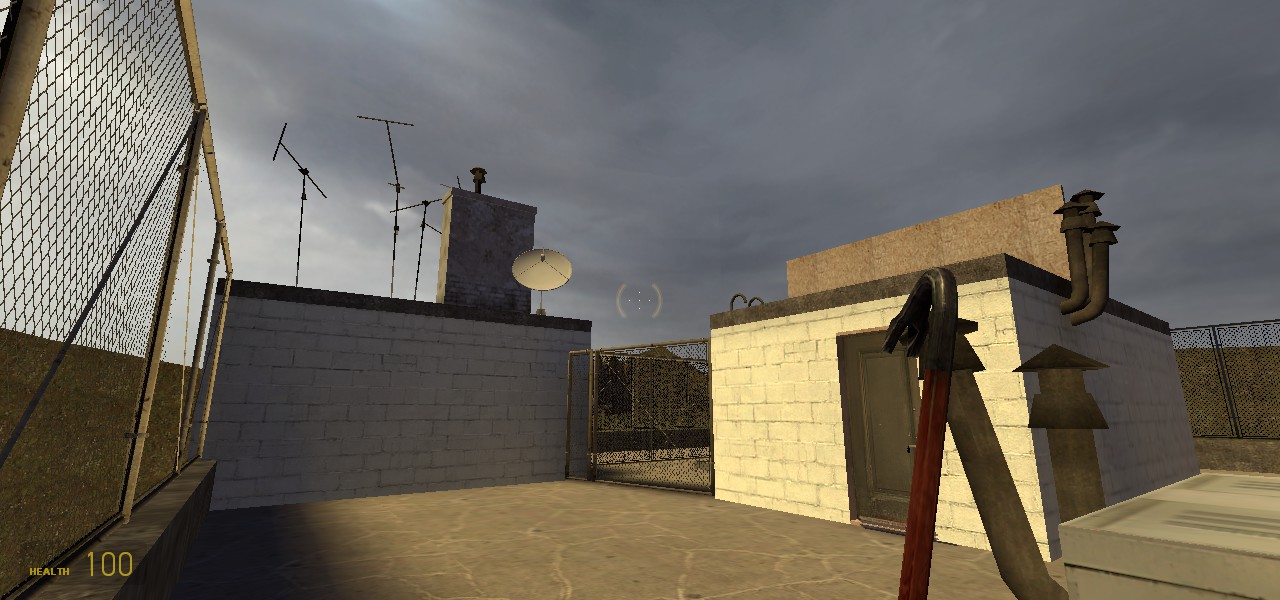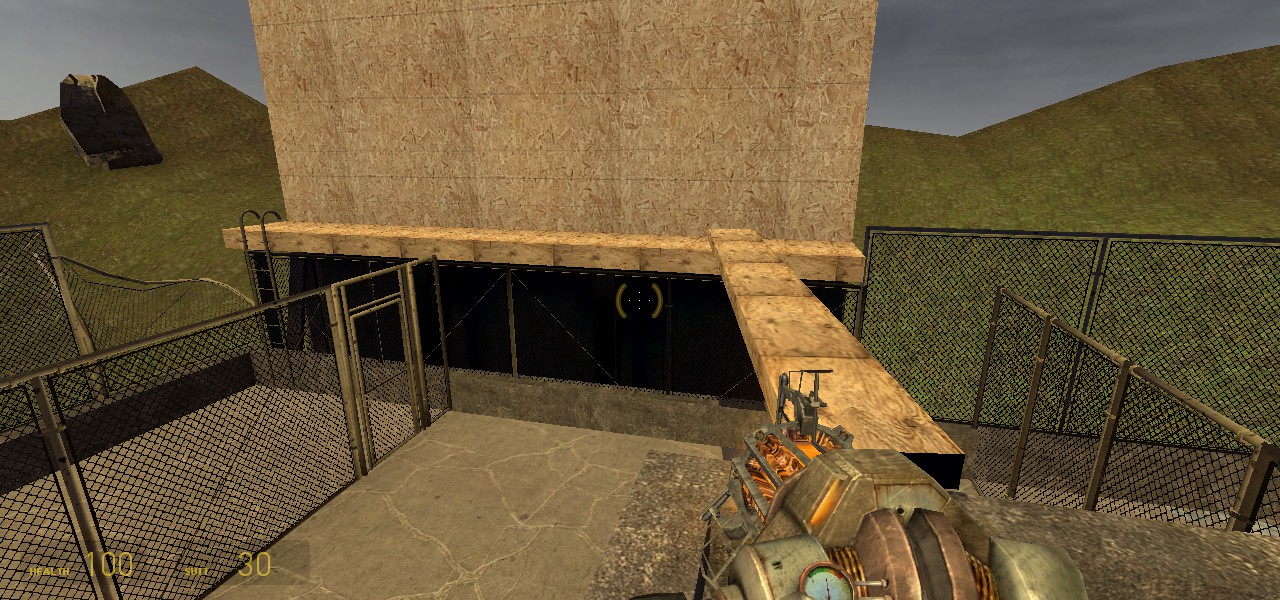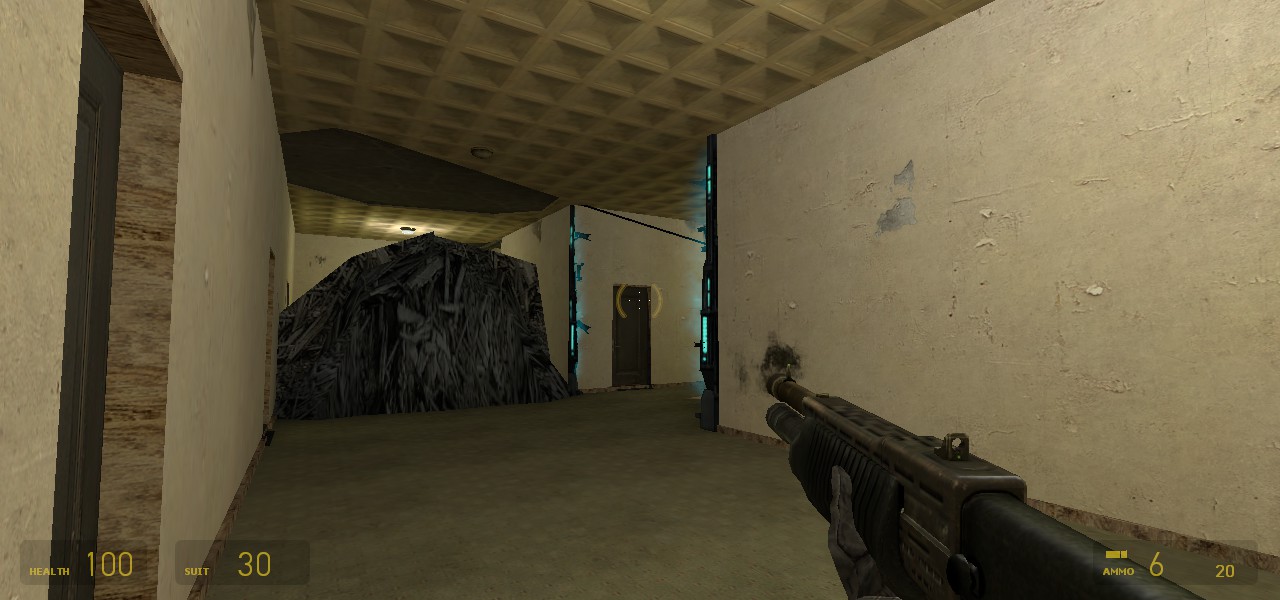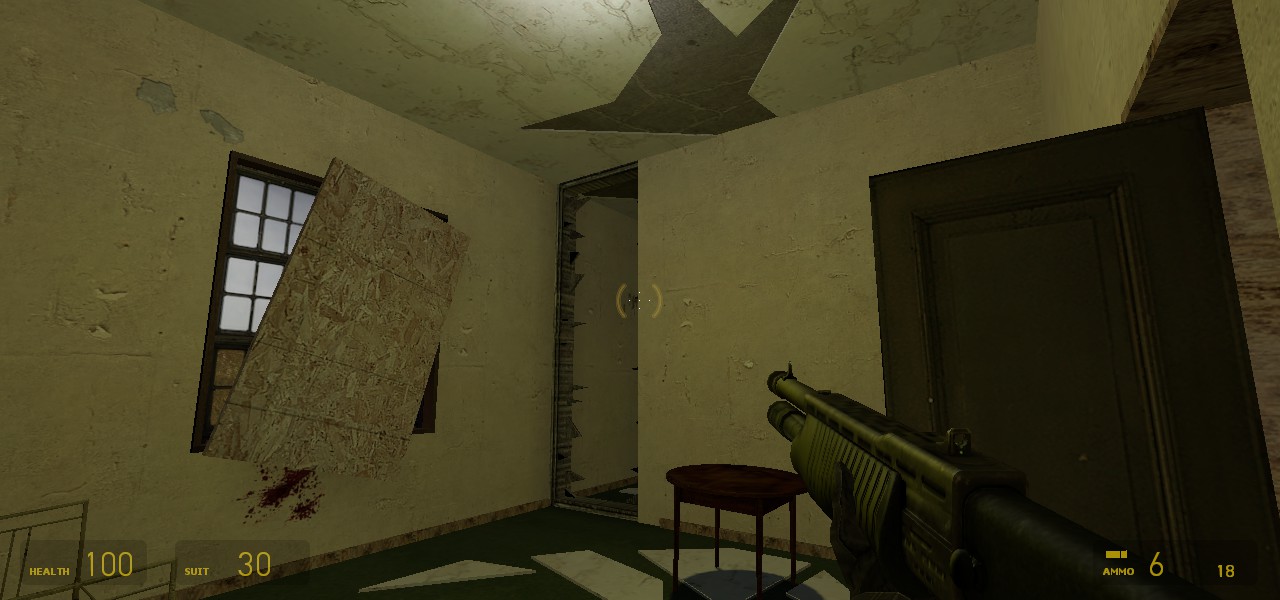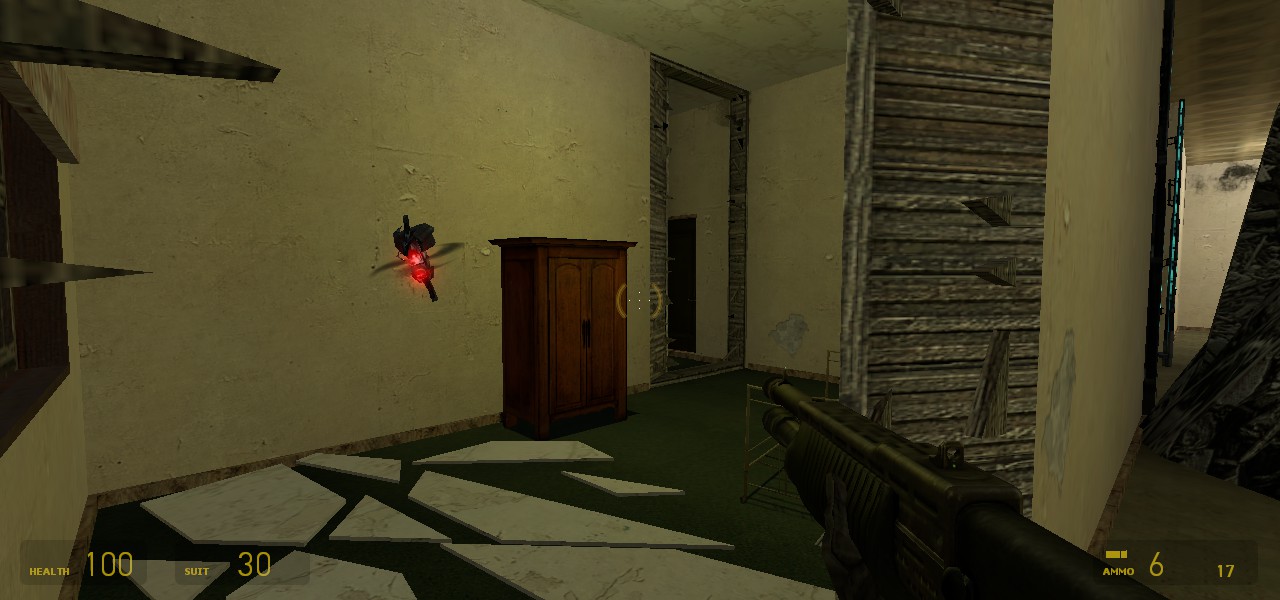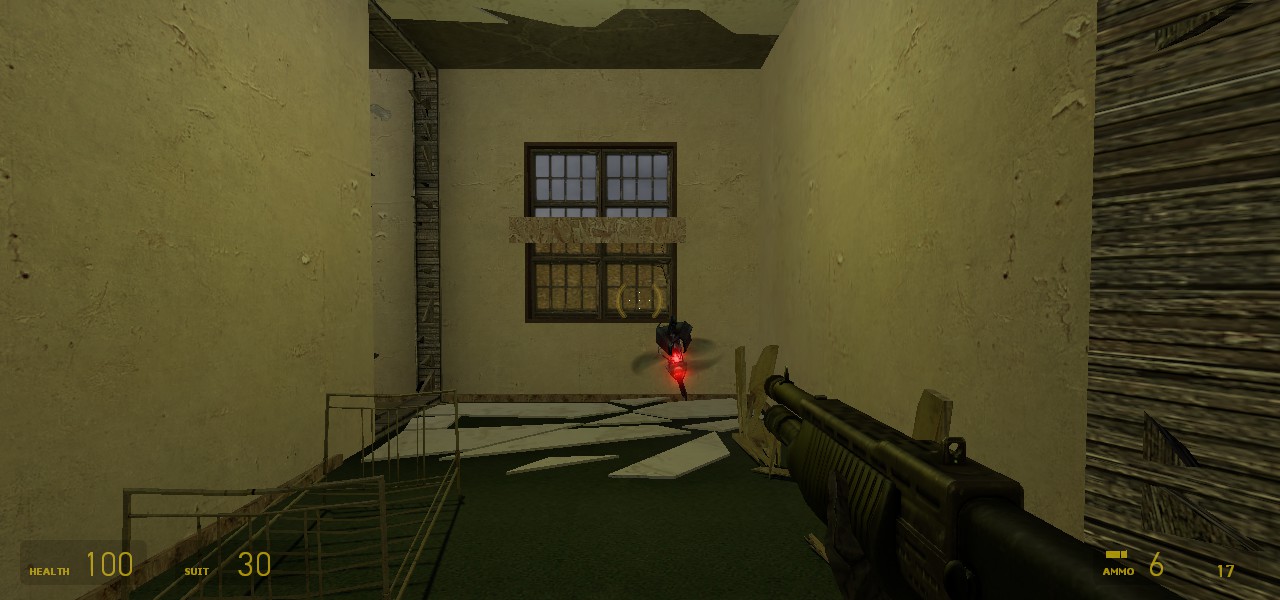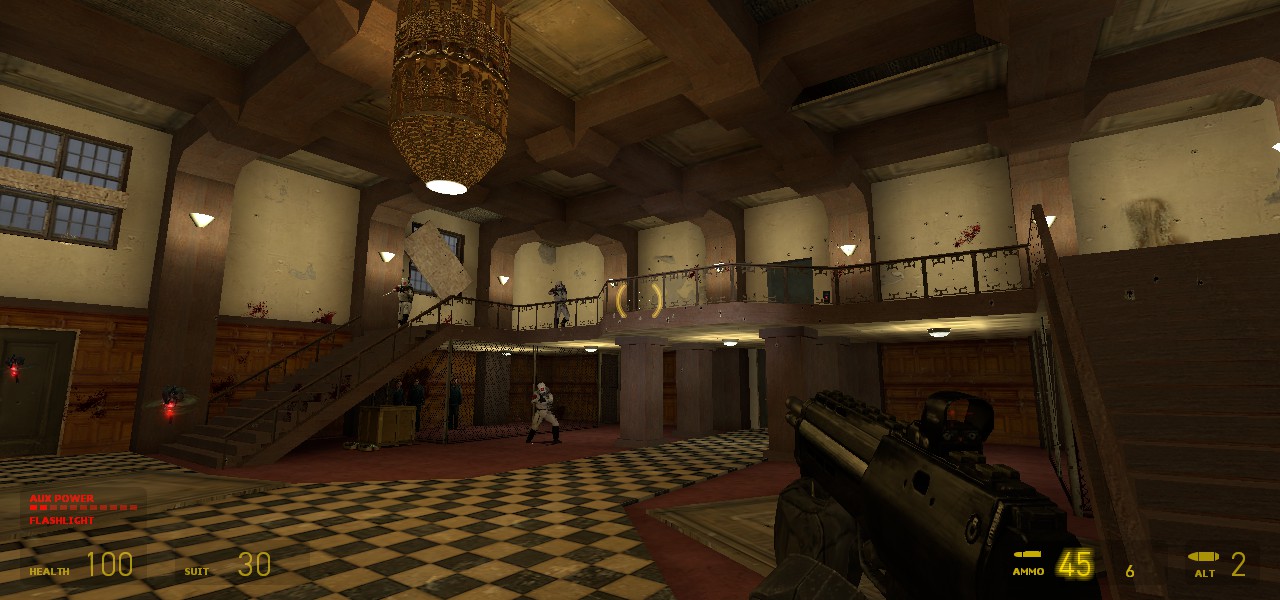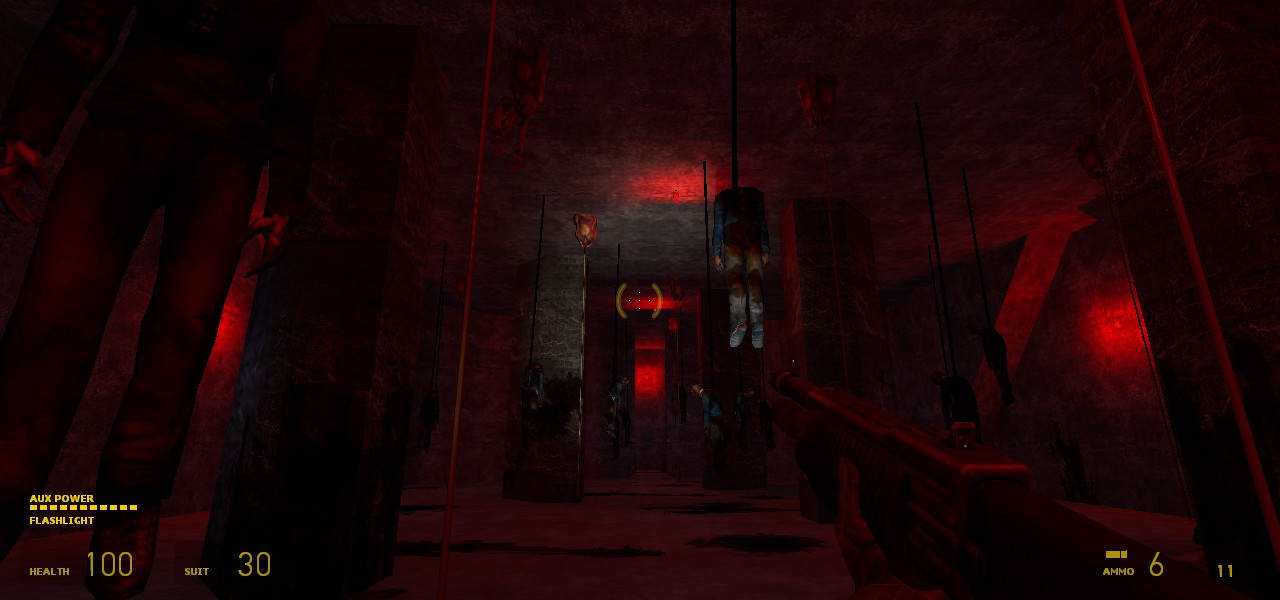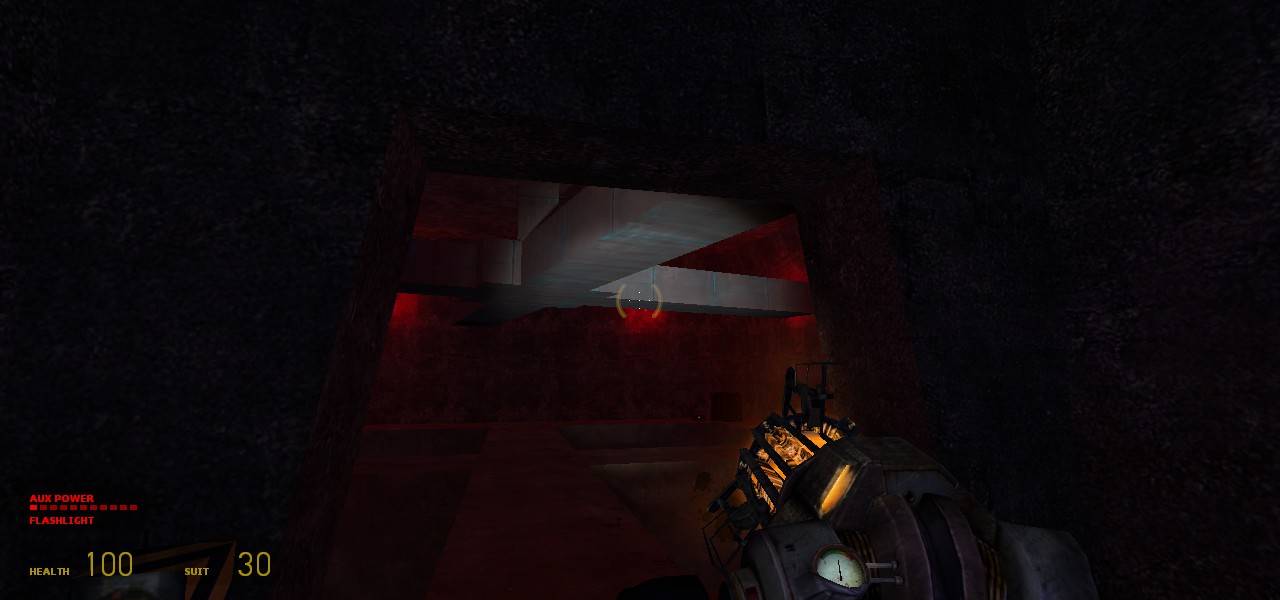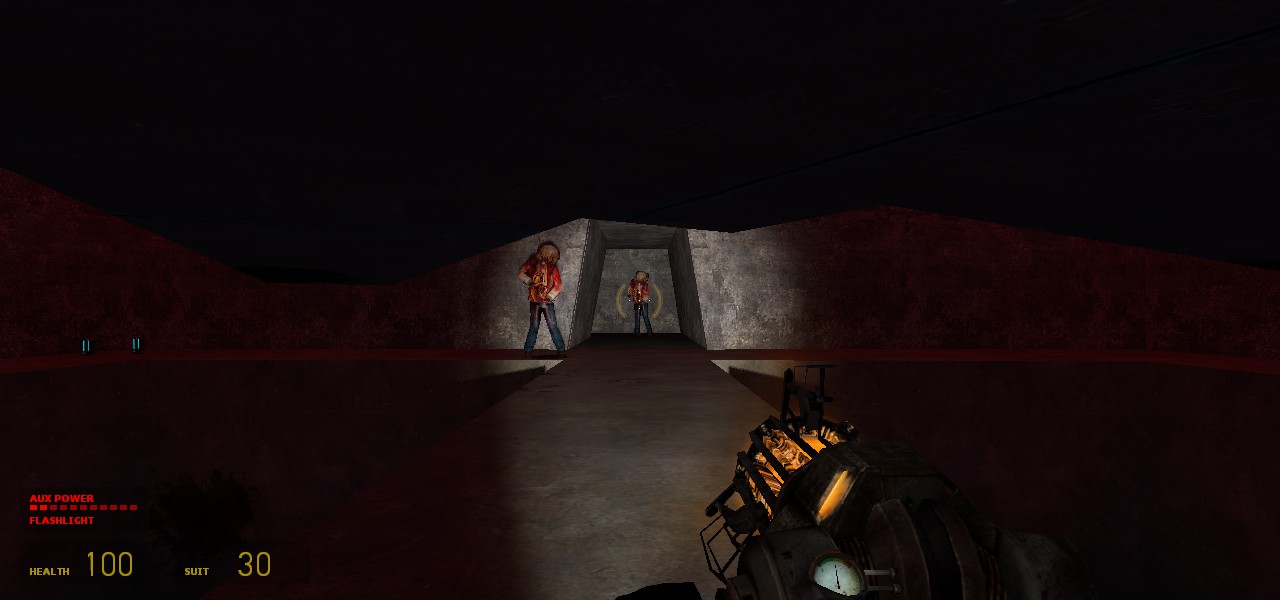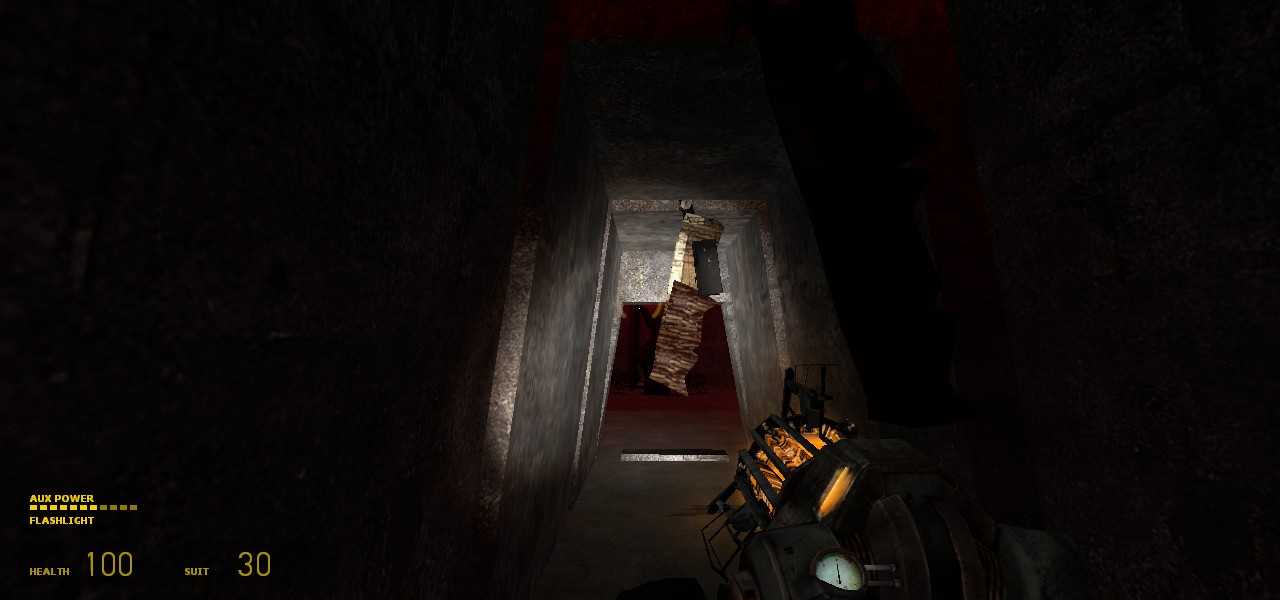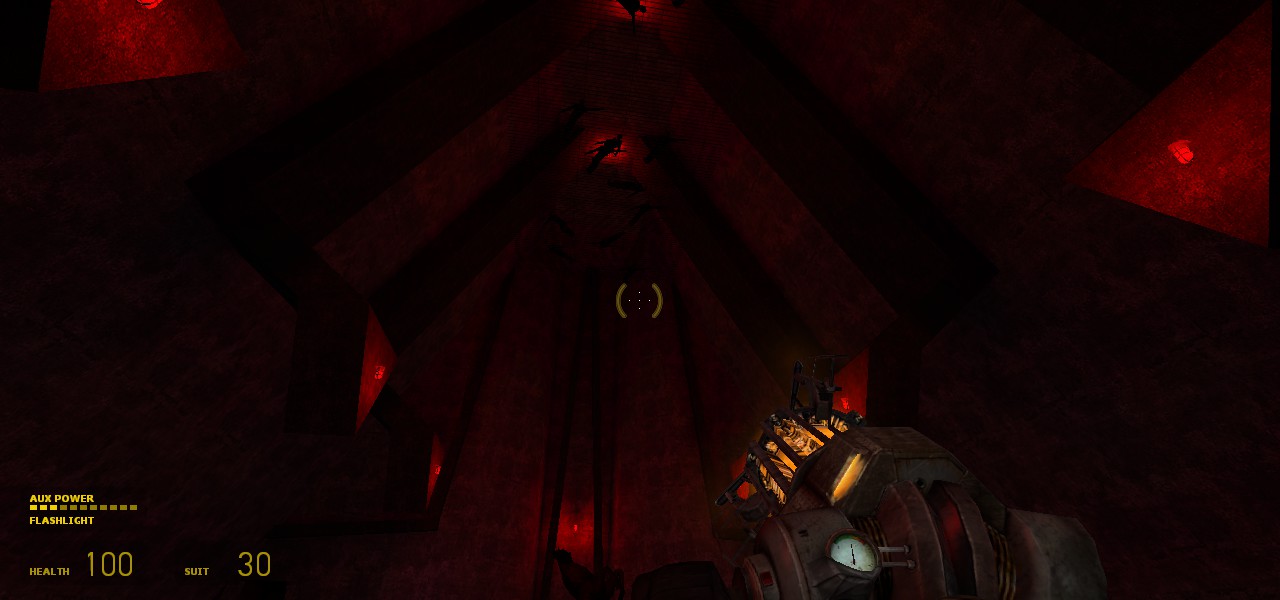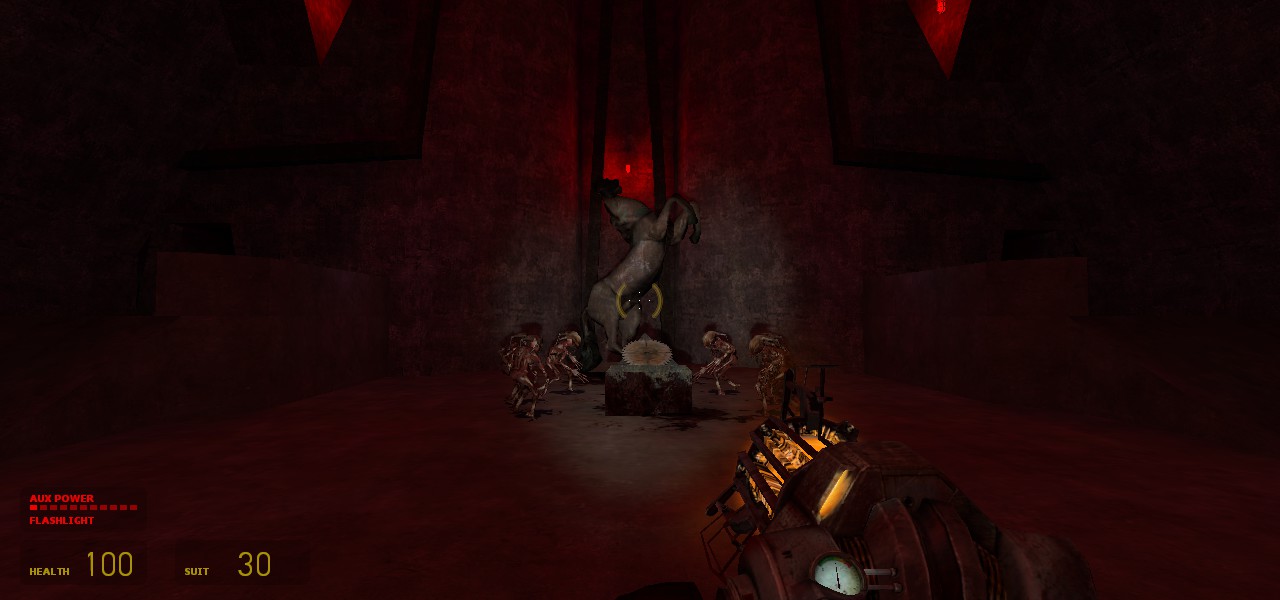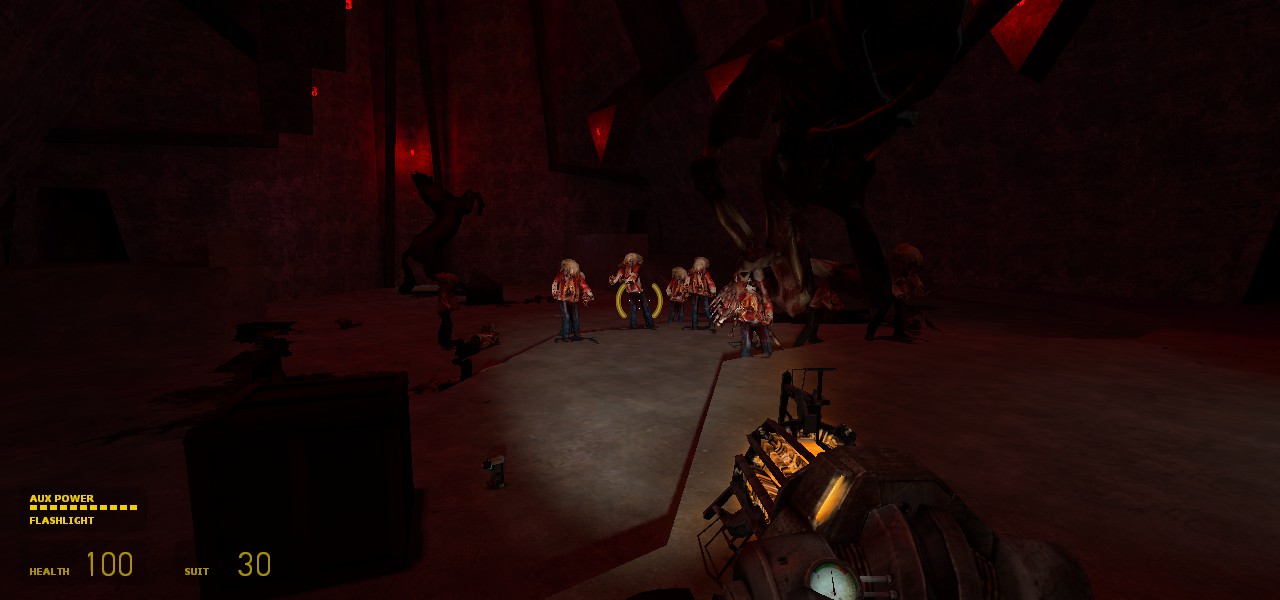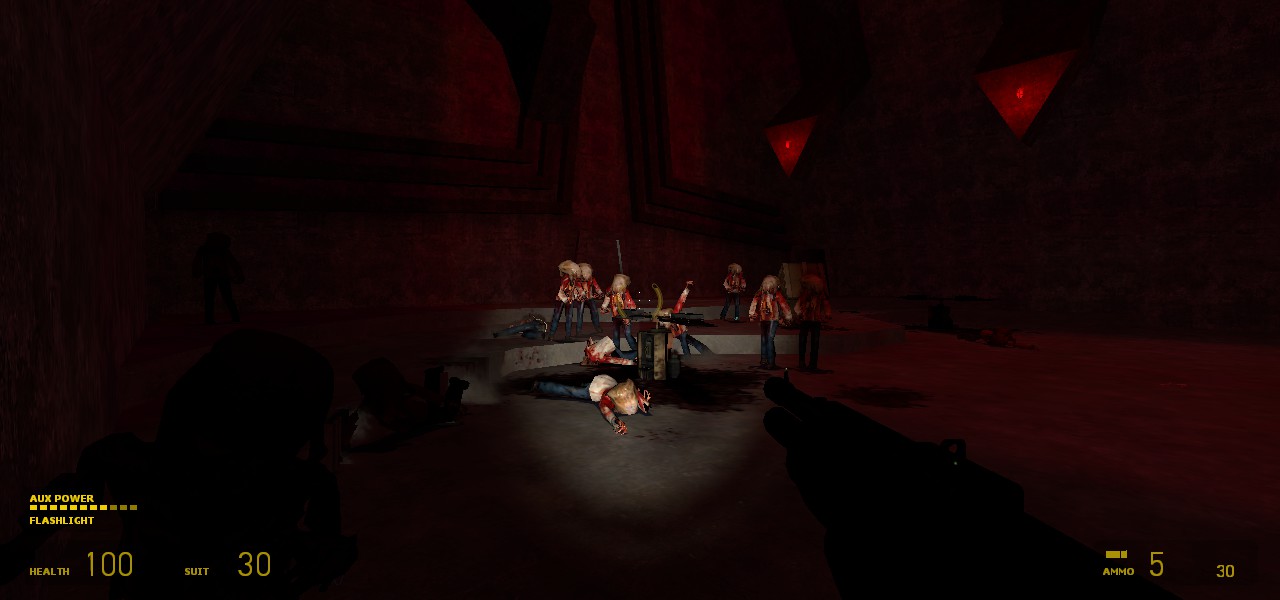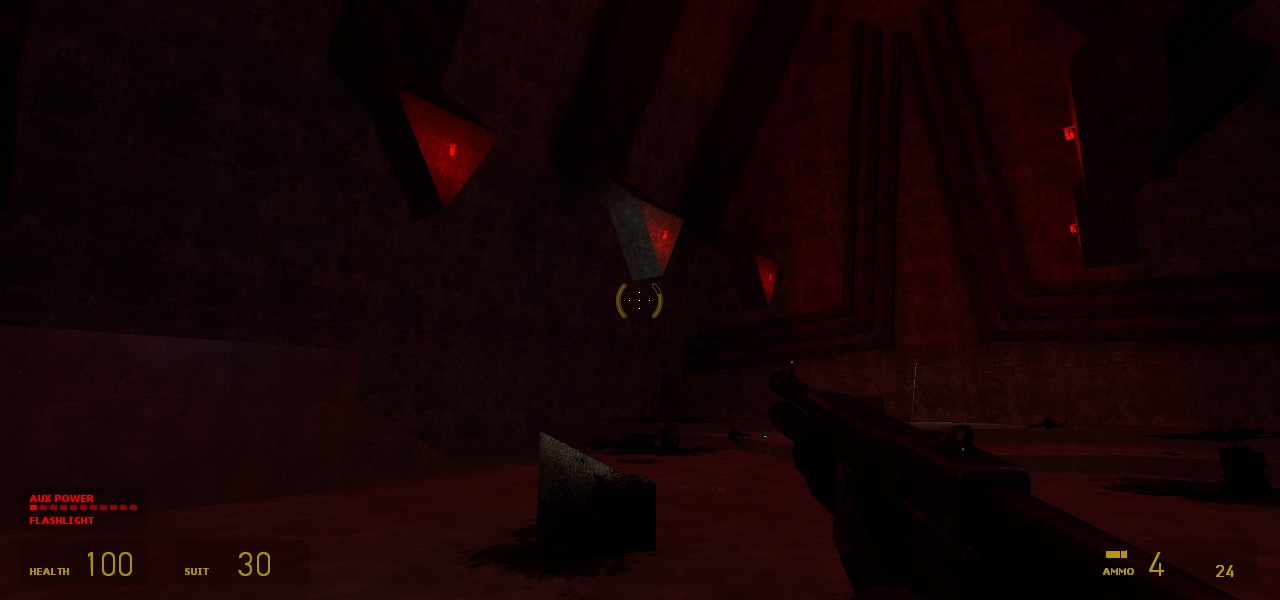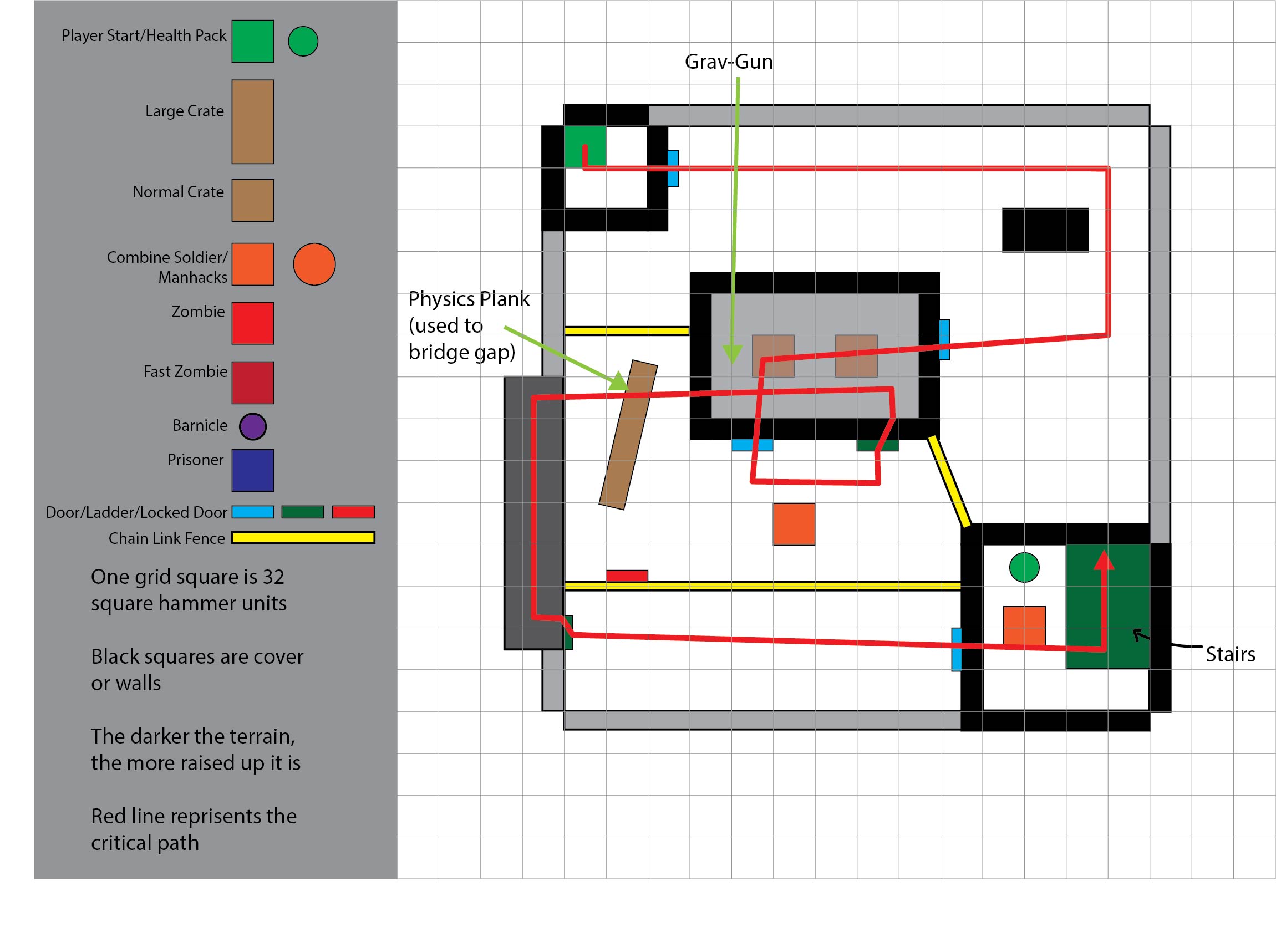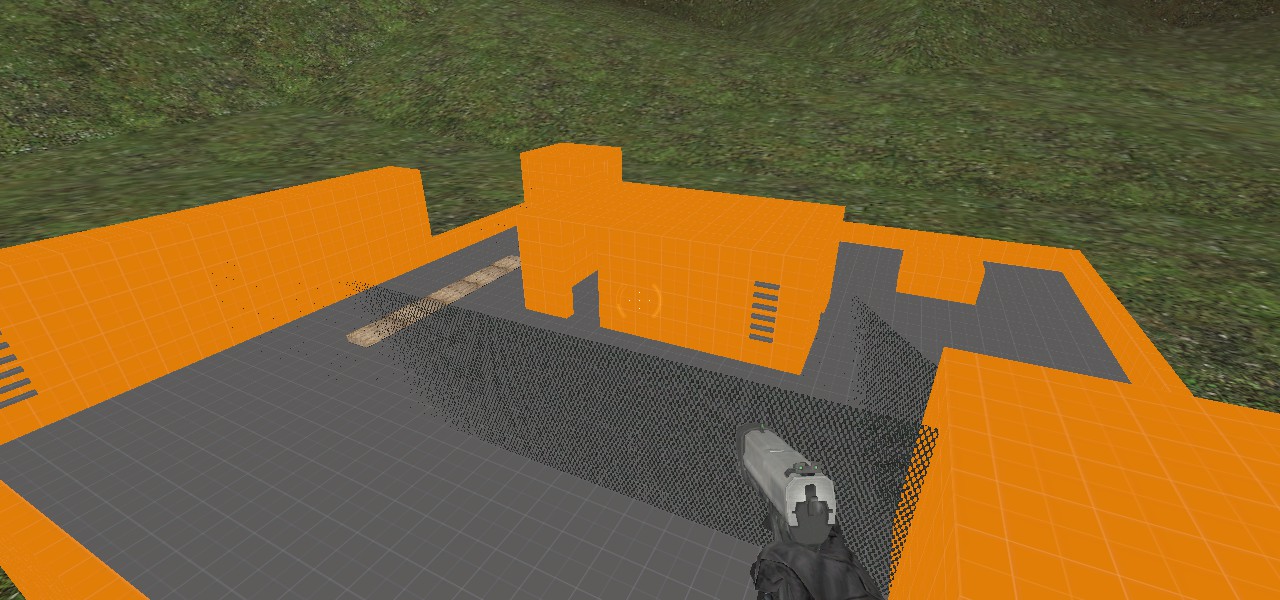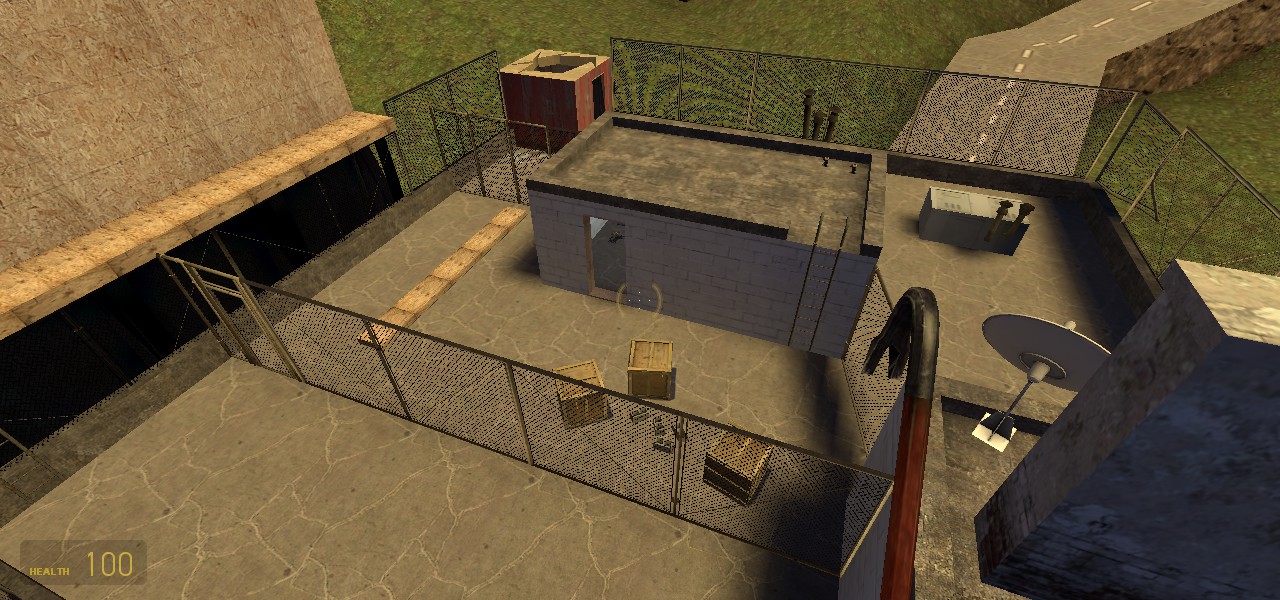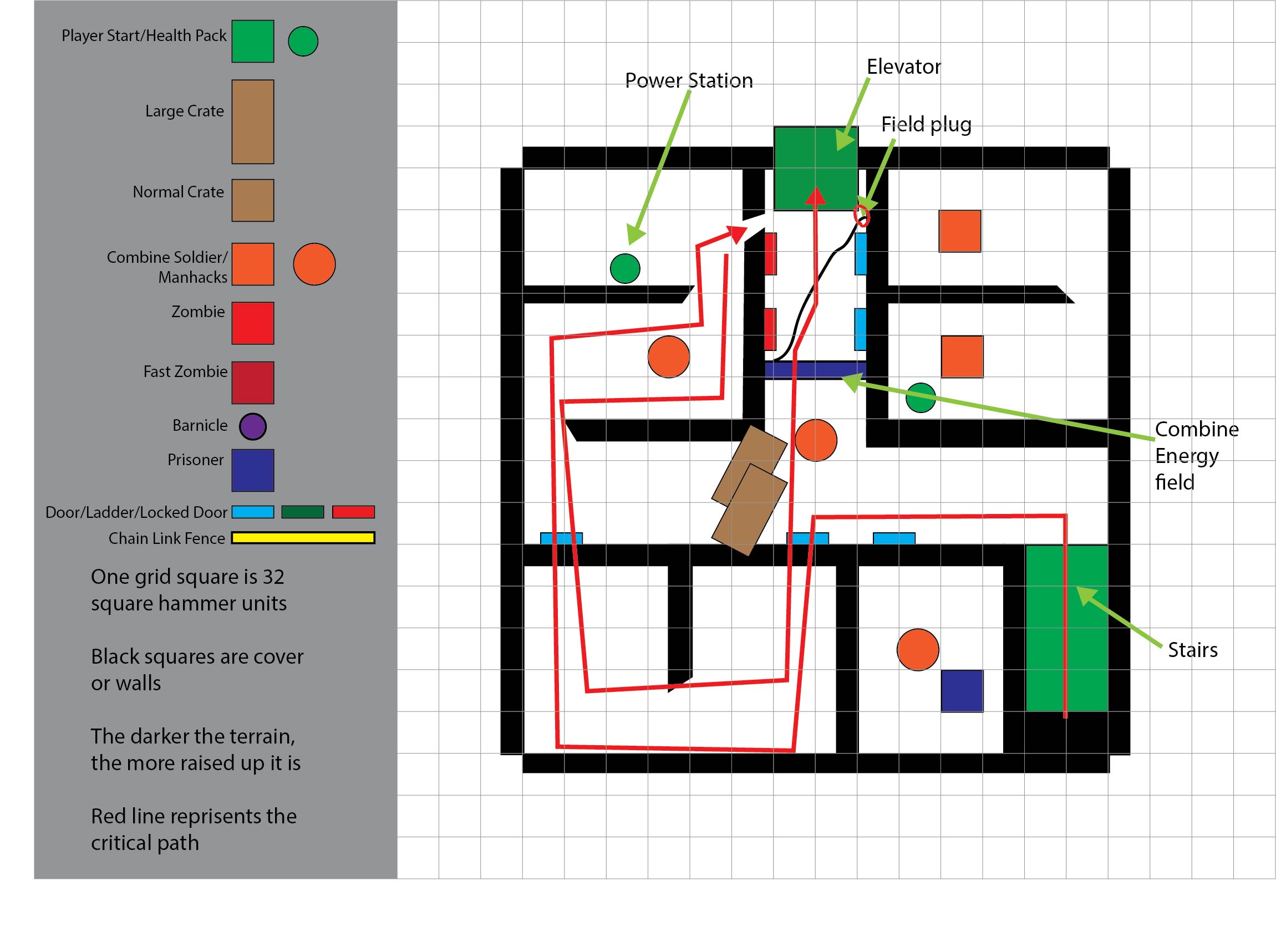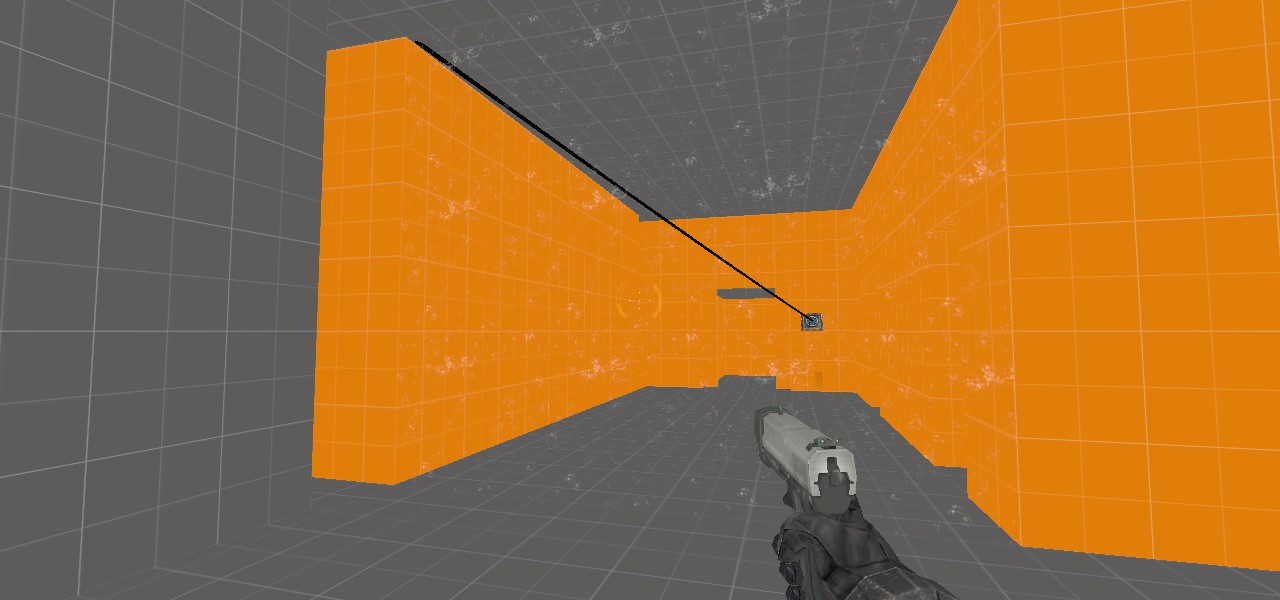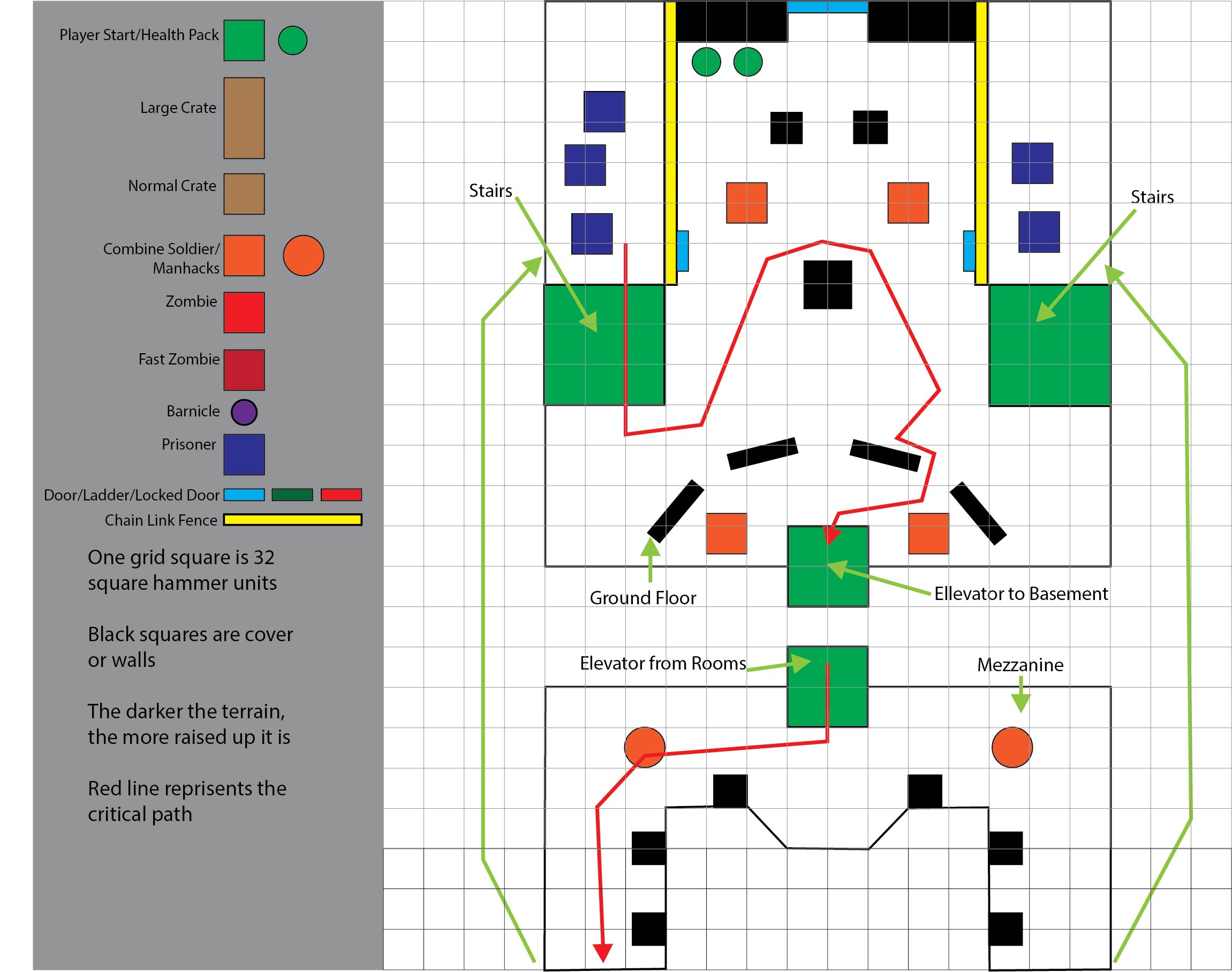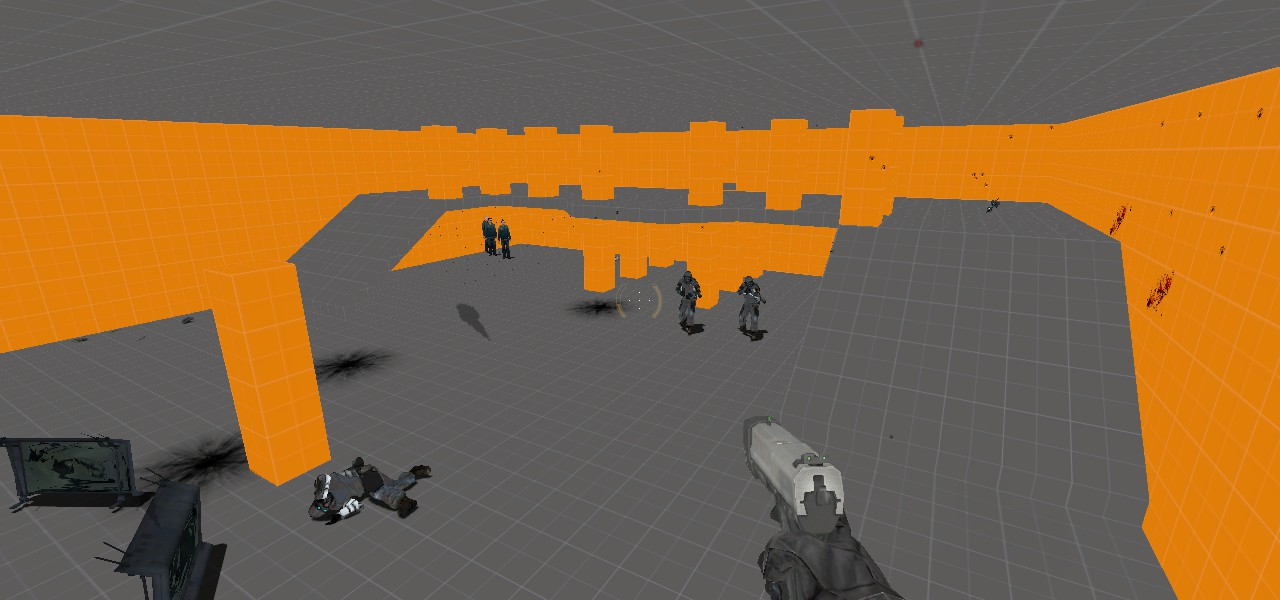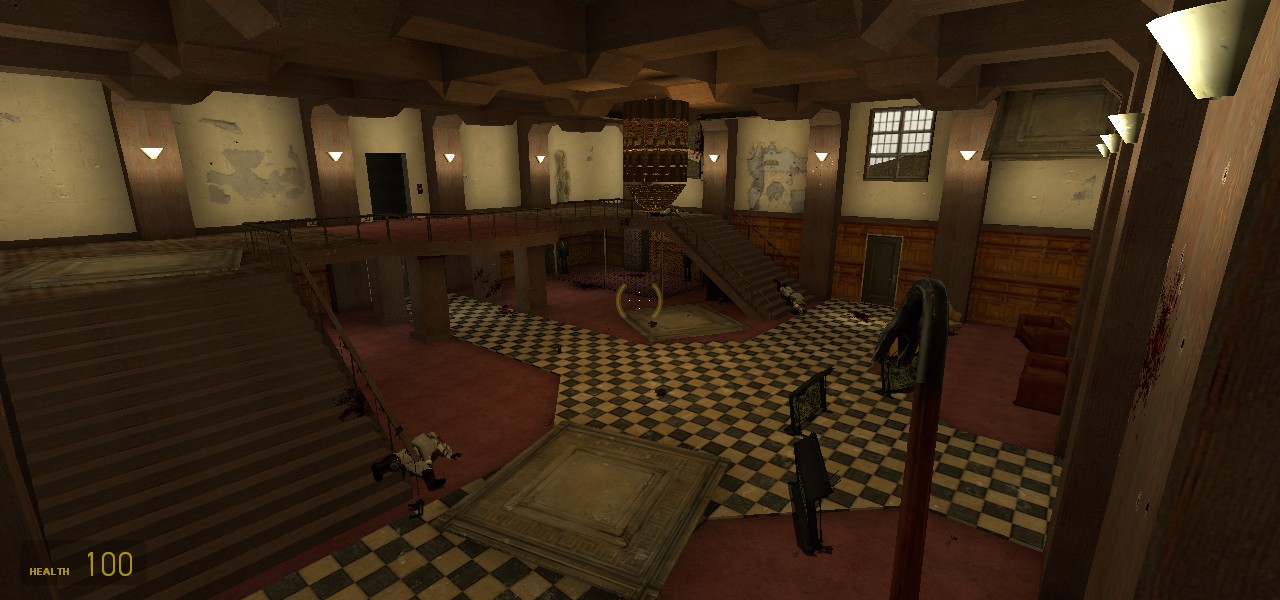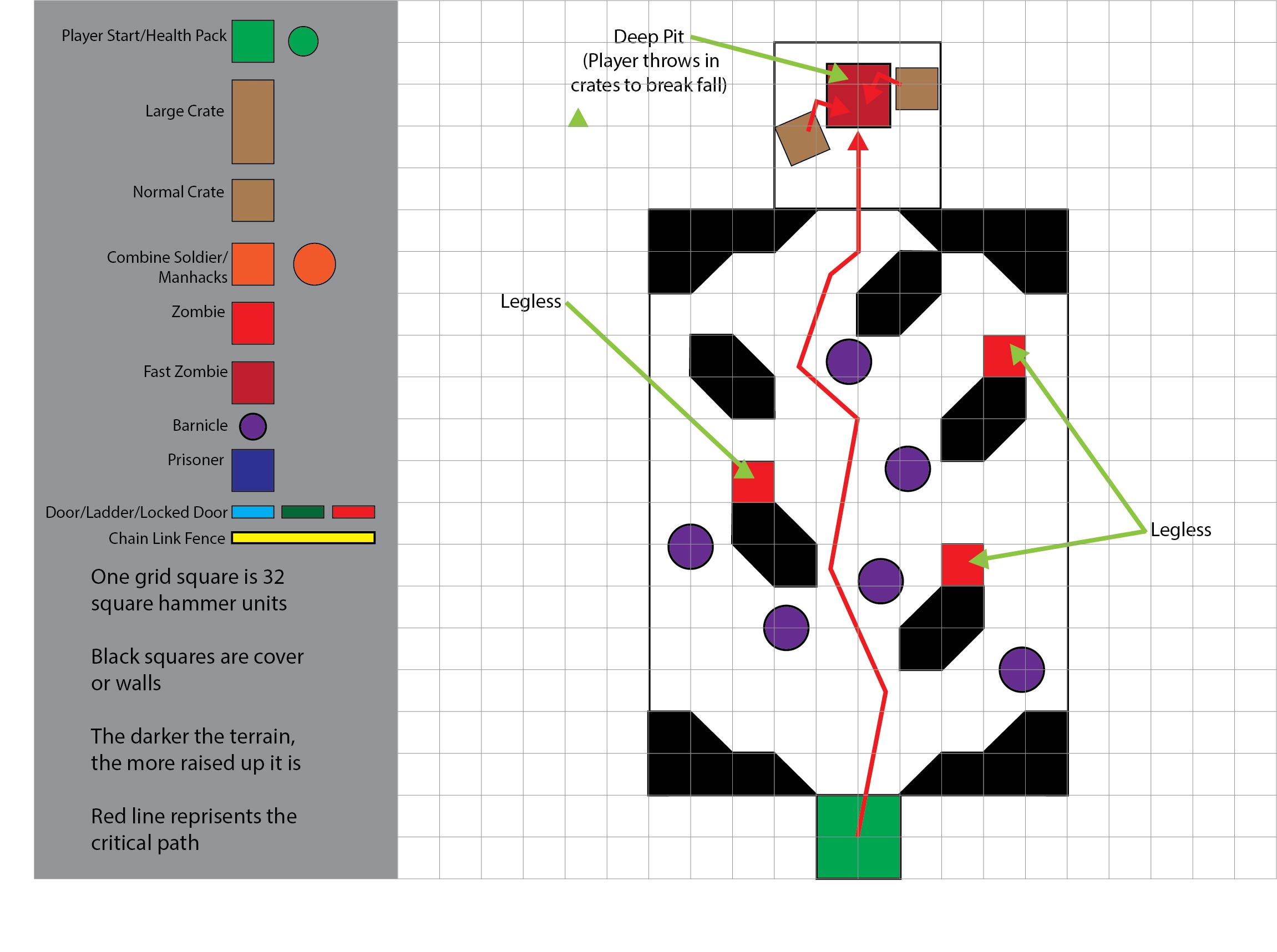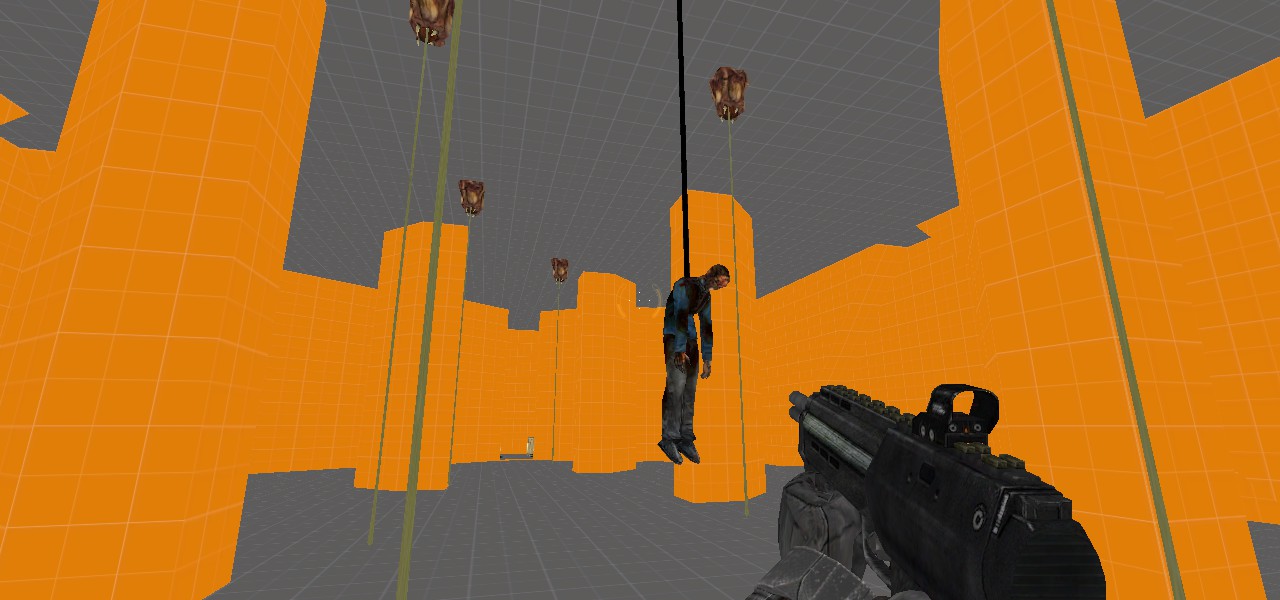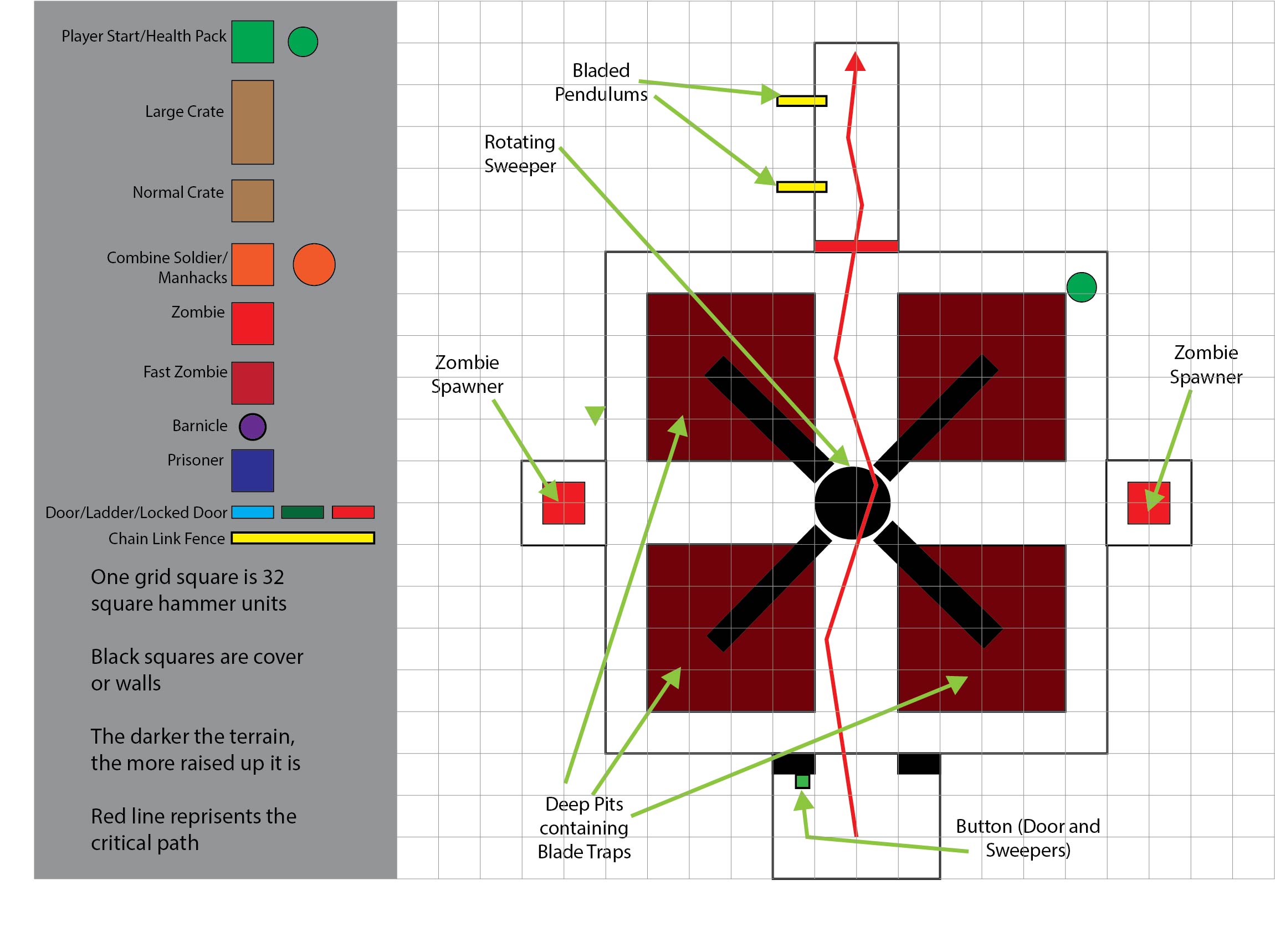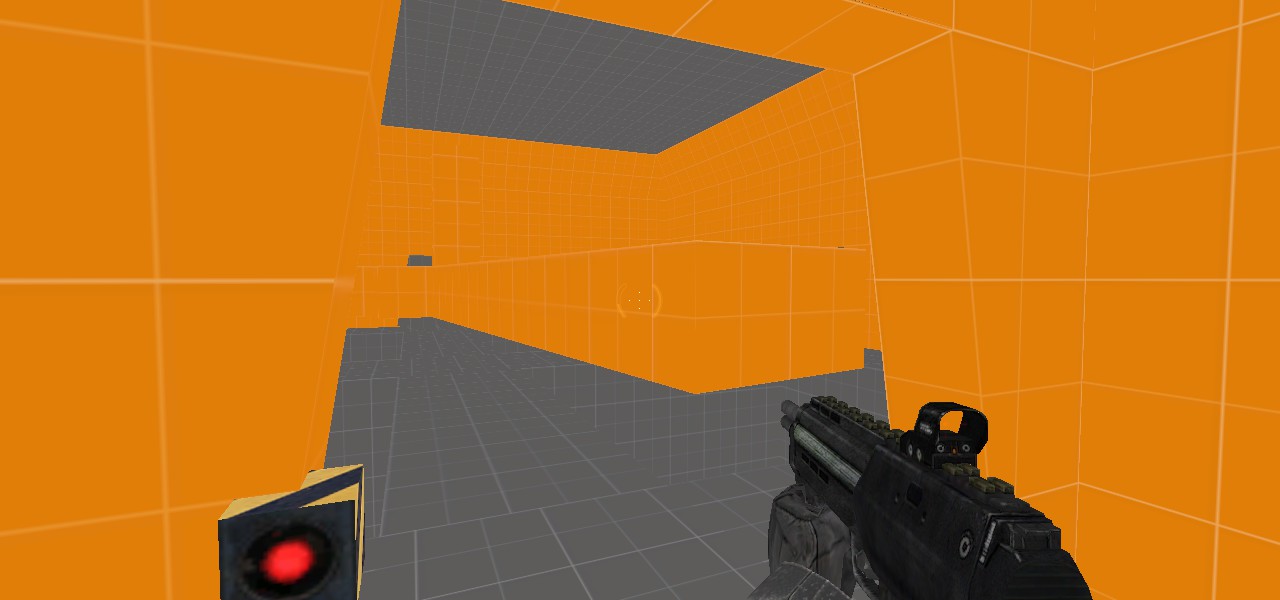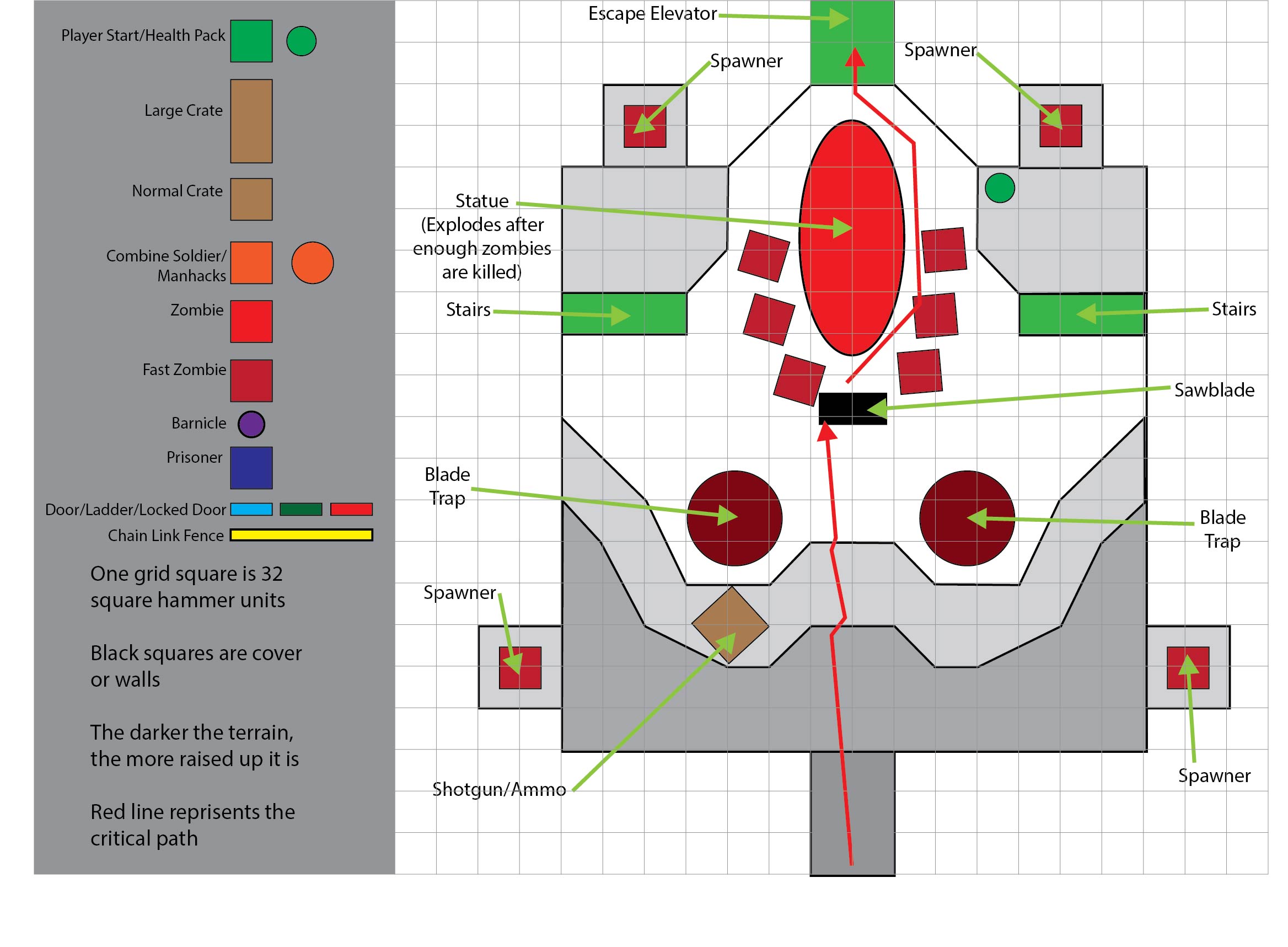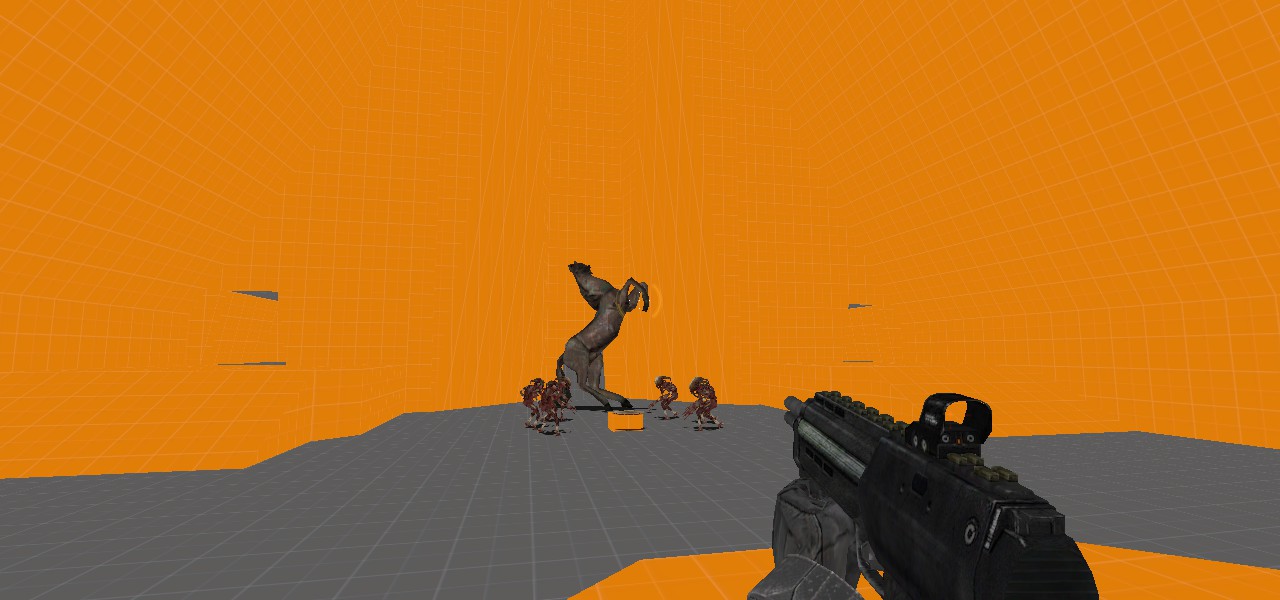HELL HOTEL - single player FPS level
Completed, Half-life themed level with a 10 minute playtime.
Made in the Hammer editor using Half Life 2 assets
Designed, prototyped, and built by me in 2018
During my Level Design 2 class at Champlain College, I practiced the process of level design as close to a professional level as is achievable in a classroom. For this project, I was responsible for creating a ten minute single player level inspired by the context of Half Life 2. I built it in three phases, starting with a detailed level visual design document, next moving on to a playable whitebox blockout, and finally polishing it into a final level complete with sound, lighting, props, textures and other details. To build the level, I used the Valve’s Hammer Editor, and was limited to the library of existing Half Life 2 Assets. My goals for this project were to get experience with a professional level design workflow, and to build a believable and engaging space while rapidly learning the engine and using the assets available, just like I would in a real studio. The result was Hell Hotel.
The context for this level has Gordon Freeman (the player) landing on the roof of a formerly abandoned hotel, with the goal of investigating rumors that the Combine has been kidnapping citizens and holding them there for some unknown purpose. Freeman fights through the dilapidated hotel to reach the ground floor, where he finds the prisoners as well as a mysterious elevator the Combine seem to be closely guarding and where supposedly more prisoners are being taken. Investigating further, Freeman discovers a hellish concrete sub-basement below the hotel filled with corpses destined to be turned into Headcrab zombies, at the bottom of which is an eerie statue which seems to have some occult effect over the zombies. Freeman must destroy it and escape.
The Level is divided into two distinct sections; the rundown hotel above and the bloody dungeon below. I designed each section with a unique tone and style of challenges I wanted the player to face, and built the environments of each to support and communicate their respective tone. I have always been inspired by the the fluidity and ease at which the Grav-Gun lets the player interact with the environment, and decided to incorporate it centrally in a unique way in each section. Overall, I wanted to emphasize a feeling of descent, with progress always signified by downward movement. In the first section the player faces Combine guards on the roof and interior of a crumbling hotel. Here, I wanted to create engaging spaces for close quarters gun combat, and set up situations for the player to use the Grav-gun to solve environmental puzzles. I paid careful attention to the placement of items and pickups to control the pacing of encounters, granting the players additional tools to defeat the enemies as they descend through the rooms, and created simple puzzles that focused on using the Grav-gun to manipulate objects to clear their path, such as unplugging a force field or grabbing a plank to create a bridge. The true challenge with this section was creating a believable space. It is set in an old, crumbling, fancy hotel, and so I had to start by designing a set of functional, logical, and beautiful interior spaces, and then working backward to add weathering details to give it the dilapidated look. I paid special attention to fine details, adding splinters of wood to holes broken in the wall as well as creating a two layer floor and ceiling using hammers BSP geometry, where I placed a thin layer of carpet/ceiling stucco over a dingier wood or concrete texture underneath, so that I could carve out chunks of the ceiling and floor, resulting in a convincing damage effect. It worked especially well for the ceiling, as I could make tiles or chunks of ceiling peeling off or lying on the floor where they had fallen, revealing the structure beneath. I chose this aesthetic because Half Life’s setting is very dingy and ruined, almost post apocalyptic and so, the majority of the textures appear dirty and ill maintained; perfect for the setting I had in mind
In the dungeon section I enjoyed a little more conceptual creativity by building a space not dependent on any human logic or established aesthetic cues. Mechanically, I built it to involve combat with Headcrab zombies using the Grav-gun and challenging horde engagements, but primarily, I designed it to look hard-edged and creepy, like a torture chamber. I used aggressive, imposing, angular architecture to create dark, claustrophobic rooms, and lit them dimly in red. My primary props were bloodstains and corpses. I designed each encounter as much for on theme spectacle as for engaging gameplay, often including ways for players to lure or force zombies into brutal traps, such as the introductory meatlocker chamber, where barnacle monsters that hang from the ceiling are hidden among corpses dangling on ropes, or the grinder chamber, where a giant bloodstained fan sweeps flailing zombies into gorey saw pits.

